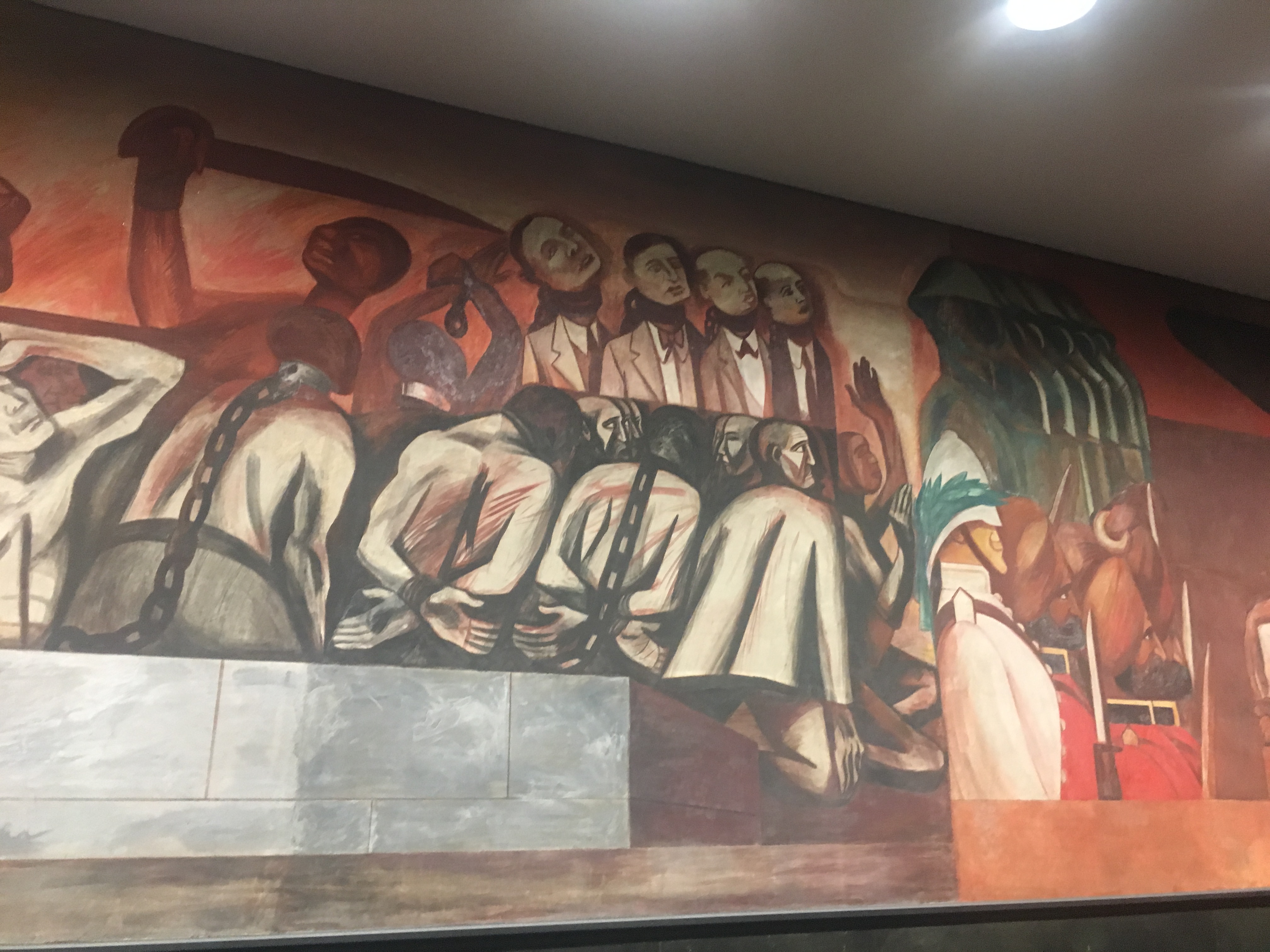Formal Analysis of a Primary Source
The warm colour scheme of the murals caught our attention. We instantly spotted a few political leaders as well as iconic historical events from the past. I noticed the Indian practice “Sati” that was painted beside Mahatma Gandhi as well as “Sikh” soldiers. This connected to my prior knowledge. We also noticed farming tools and symbols of Communism along with a scene of prisoners being dragged along. It revealed the theme of the mural however not how it was related to the conference room setting or the context that it was brought into the New School. I wished I could get more information from the artist as to what the objective of the painting was when it was made and how it was received my the viewers at the time. In order to look for answers we observed certain details such as the wearing off of the paint that signified the duration of time it had been up on the walls for. After looking deeper we found a plaque outside the Orozco Room that explained that it was painted in 1913 however we had questions regarding if it was painted in the room itself or brought here later. The materials used on this Mexican painting were oil and acid.
Besides the mural, the square room had a warm yellow lighting that made us feel calm and composed. The entry door was heavy and seemed to be soundproof. There was a podium that could be used by a speaker during a meeting, 4 exits and the ceiling seemed pretty old. The room had a strange odour, speakers on the ceiling, a projector, wooden tables and black chairs in the shape of an ‘O’.



